With Paris Men’s Fashion Week now in full swing, all eyes are on Jonathan Anderson as he prepares his first menswear collection for Dior— a house whose masculine identity has been reshaped repeatedly over the past two decades. From Hedi Slimane’s razor-sharp revolution to Kris Van Assche’s quiet refinement and Kim Jones’s couture-meets-streetwear era, each designer brought a distinct vision to the legacy of Dior’s menswear. As Anderson steps into this lineage with his sculptural flair and gender-fluid sensibility, everyone is excited to see how he’s going to take Dior to the next level. In anticipation of his debut show tomorrow, here’s a look at the past creative directors who had shaped Dior Men.
Hedi Slimane (2000-2007): The Birth of the Slim Silhouette
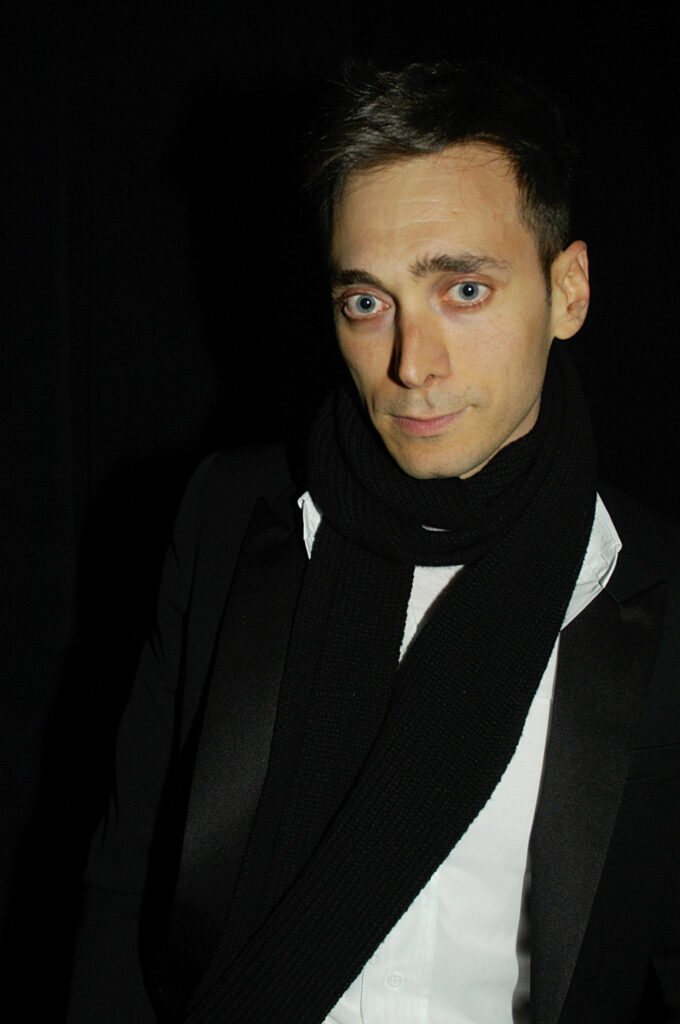
When Hedi Slimane arrived at Dior Homme in 2000, menswear was still dominated by broad-shoulder codes of oversized ‘90s sportswear and boxy power suits. Slimane proposed something radically different: leaner, more poetic, more provocative—a romantic outline cut with the intensity of punk and the fragility of glam rock. His ultra-skinny suits, monochrome palettes, and androgynous street-cast models rewired the male silhouette and tilted the axis of modern masculinity.
Behind the genius is a quietly obsessive creative. Slimane studied art history in Paris and entered fashion via photography, casting, and styling. His time at YSL Rive Gauche Homme and his documentation of youth subcultures in New York and Berlin deeply informed his aesthetic. “I try to explore what already exists in the street,” he once said. “ This idea of wearing clothes, of behaving… It’s just about translating it to Dior.”
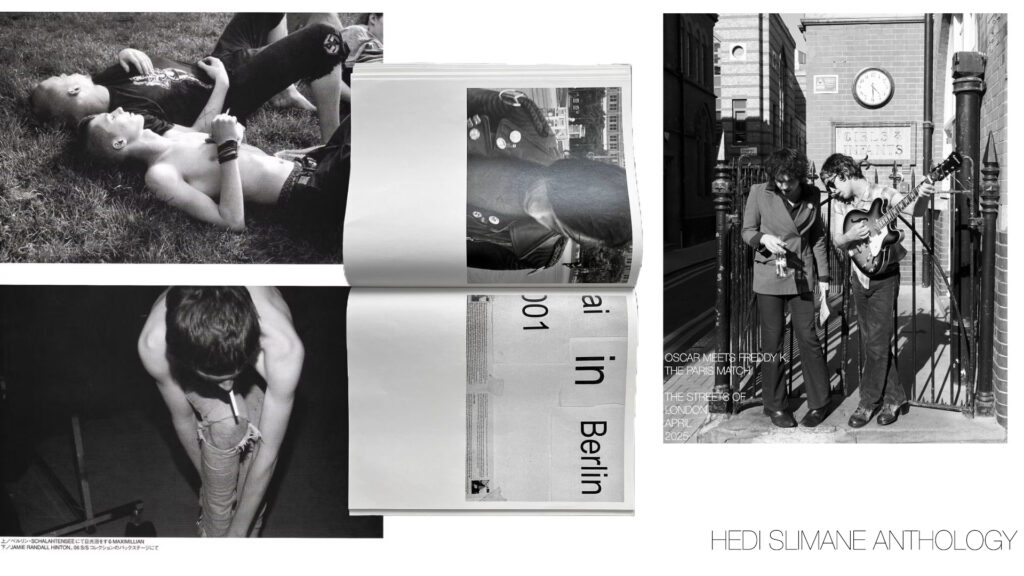
Slimane’s men were rock stars, poets, club-kids— fragile but defiant, soft-spoken but hyper-stylized. His models looked like they’d just been pulled off a Berlin dance floor at 3 am, where the aesthetic was just as much about attitude as cut: long and lean proportions, slouching trousers and white shirts barely tucked in. The tailoring was military-tight but worn with the languour of youth. This distinctive look would quickly become known as “the Slimane effect.”
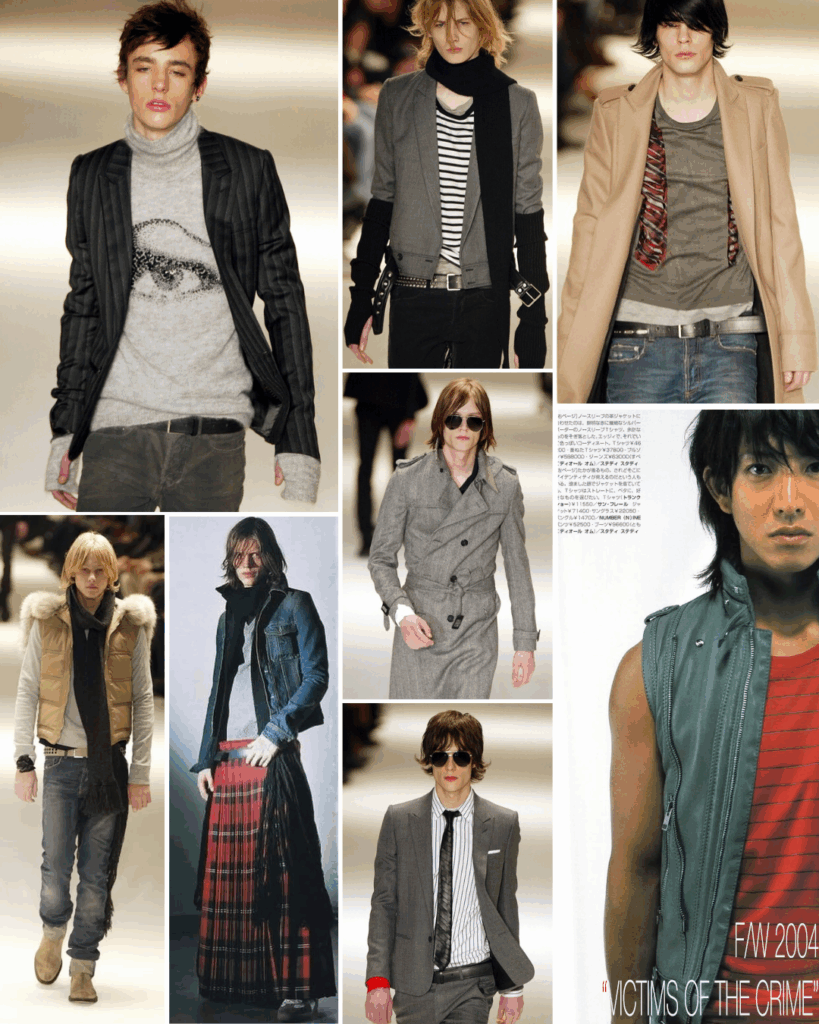
By 2002, he became the first menswear designer to win the CFDA International Designer of the Year award. Dior’s profits rose by 41%. But more enduring was the cultural blueprint he left: Karl Lagerfeld famously lost 90 pounds to wear his suits; David Bowie praised the “mysterious sexual allure that had always been the exclusive provenance of the women’s collections.” Slimane rejected the traditional “Adonis” in favor of someone more emotional, intellectual, and fluid. His legacy still echoes today, from indie frontmen to K-pop idols.
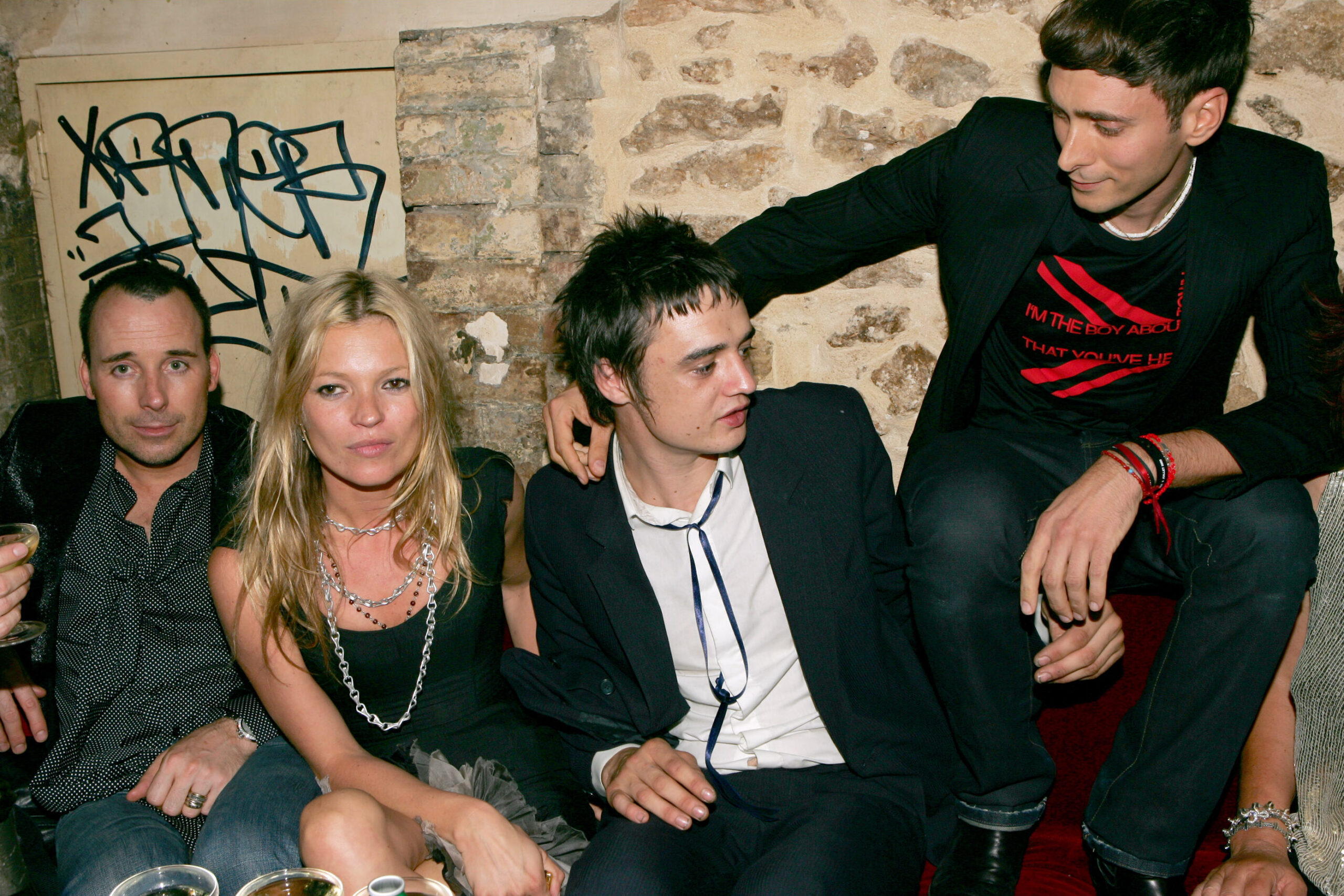
Kris Van Assche (2007-2018): The Quiet Recalibration

If Hedi Slimane detonated menswear, Kris Van Assche rebuilt it, carefully and thoughtfully. His approach was about contrast: sportswear and tailoring, youth and heritage, sensitivity and formality. He broadened the silhouette, physically and ideologically, making space for nuance and dialogue.
Educated at the Royal Academy of Fine Arts in Antwerp and a former assistant to Slimane, Van Assche brought a Belgian sensibility: restrained, introspective, and evolution-minded. At Dior, he introduced hoodies, sneakers, and relaxed trousers without sacrificing precision and luxury. His Dior Homme didn’t chase trends; it anticipated a future where tailoring and streetwear coexist, not compete. “Great tailoring is never out of fashion,” he insisted, even during the rise of hype-driven streetwear.

Though less loudly celebrated, Van Assche’s decade-long run was pivotal. He was the ideal successor for what Dior Homme could be in a post-Slimane world— adaptable, human, and hybrid. His work foreshadowed today’s fusion of tailoring and streetwear, where masculinity is understood as layered, evolving, and articulate.
Kim Jones (2018-2024): Street Meets Couture
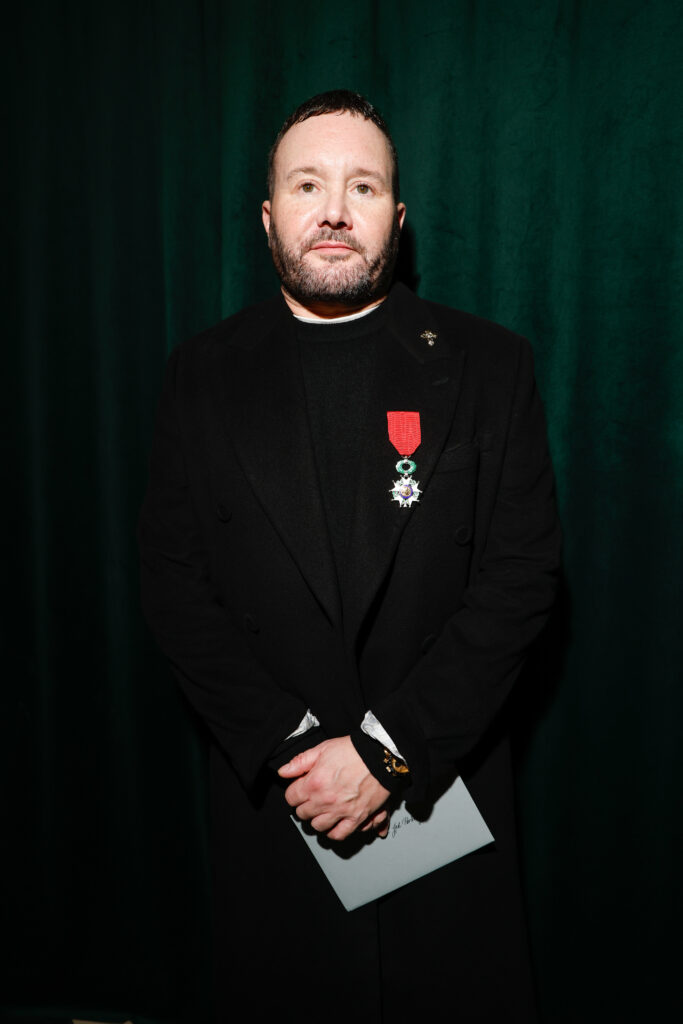
As Kim Jones took his final bow at Dior Men in January, he was awarded France’s highest civilian decoration, the Chevalier de la Légion d’Honneur, for his contributions to fashion and culture. When he took the reins at Dior in 2018, he transformed Dior into a global juggernaut— image-led, pop-savvy, one foot in contemporary culture and the other in couture.
Trained at the prestigious Central Saint Martins with a former run at Louis Vuitton (where he brokered the iconic Supreme collab), Jones understood the evolving grammar of menswear. He softened Dior’s rigid tailoring into sculptural, draped silhouettes. A master of elevation, he infused streetwear with couture detail such as silk organza, embroidered bombers, and monogrammed sneakers.
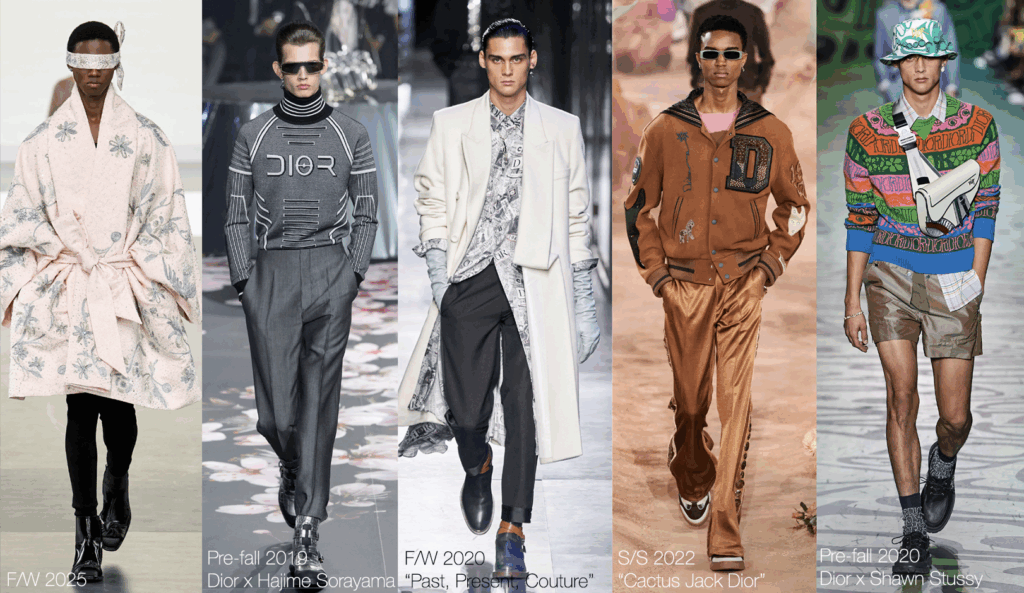
He honored Christian Dior’s love for art and formal beauty by collaborating with artists like KAWS and Daniel Arsham, and brands like Stüssy and Denim Tears. Dior became a fixture in global pop culture, worn by idols and athletes alike.
Renaming “Dior Homme” to “Dior Men” was symbolic, signaling inclusivity and global reach. Jones embraced logos, drops, and internet-era virality but maintained craftsmanship at its core. His menswear wasn’t subversive like Slimane’s, but disruptive in strategy and scale, collapsing the gap between the street and salon, transforming Dior into a true cultural powerhouse.
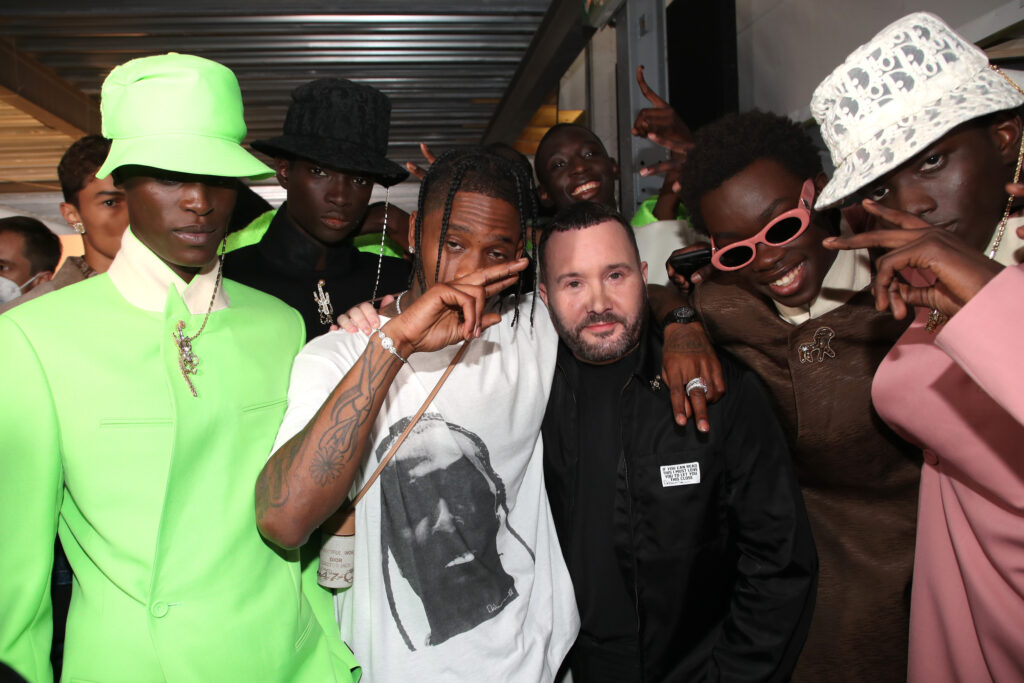

What’s Next?
Now, Dior enters a new chapter with Jonathan Anderson at the helm for both men’s and women’s lines. Known for his conceptual silhouettes and gender-blurring designs, Anderson brings a bold new language to the heritage maison. But with 18 collections across Dior, his namesake label, and Uniqlo, what’s at stake isn’t only how Dior will look like under Anderson, whether he can sustain such a pace without diluting vision. His debut menswear show for Dior, set to unveil tomorrow, will reveal how he plans to reinterpret the codes of a house shaped by both lineage and disruption—and whether he can chart a legacy of his own.






